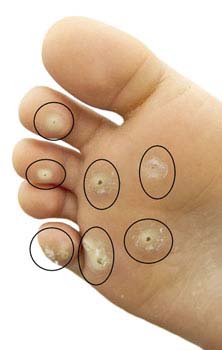
Corn: Corn is a small, painful, raised bump on the outer skin layer that is conical in shape with the tip pointing inwards and base formed by the outer skin.
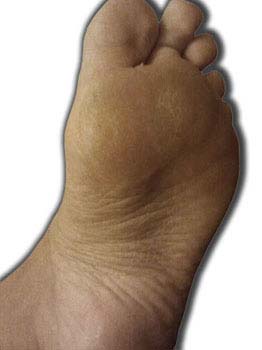
Calluses: Calluses are localized thickenings of the outer skin layer as a result of repeated friction.
Pathologically, corns and calluses are the same. In both, the skin has thickened in response to repeated pressure.
There are 2 basic types of corns:
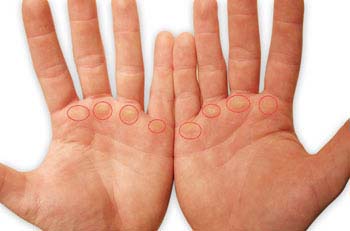
1. Heloma durum (hard corns): It has dry and horny appearance. It is commonly found over the joints of the fingers. Often, it is dark yellow with a hard central nucleus, overlain by calluses.
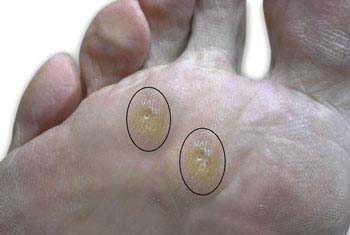
2. Heloma molle (Soft corn): It is soft, white, rubbery and can be extremely painful. It usually develops between the toes (areas that people forget to dry well or where they sweat a lot). Soft corns may develop opposite one another and are called "kissing lesions".
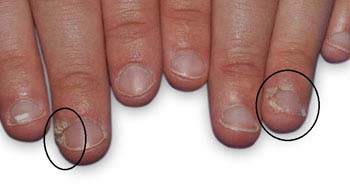
Periungual Corn: Another less common type is periungual corn which occurs near the edge of a fingernail. The skin surface becomes hard and thick.















